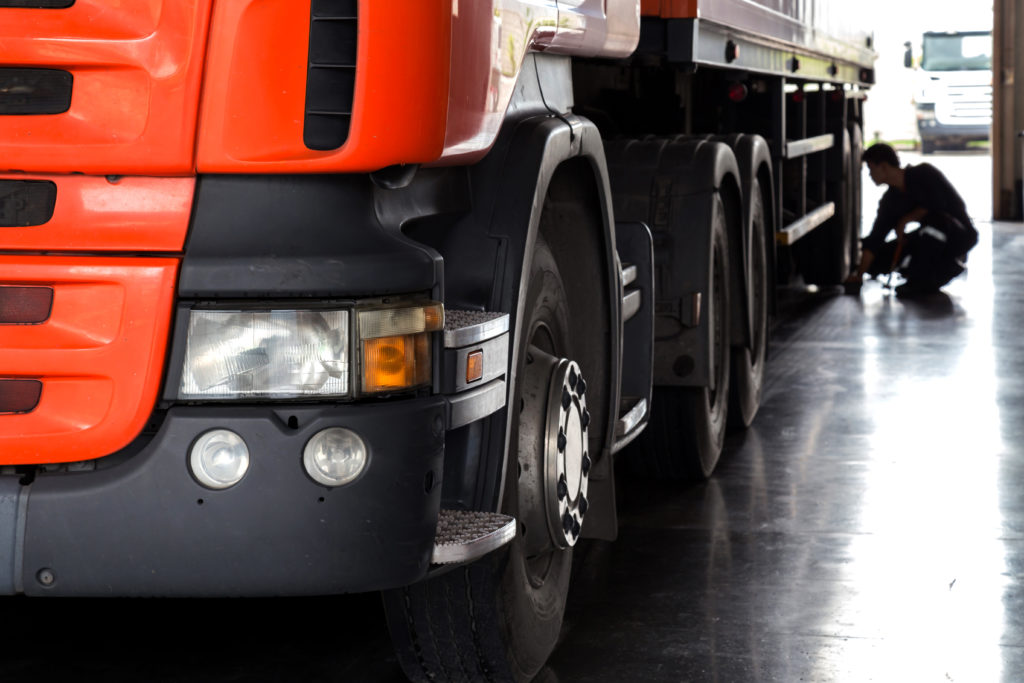A new proposal could be underway that would begin regulating automatic emergency braking system standards for heavy trucks and would likely require all big rigs to have this kind of technology implemented, according to the National Highway Traffic Safety Administration’s recent announcement.
These plans would be put in place “over the next year and beyond,” said NHTSA in its mid-June release, which detailed its regulatory agenda for the coming months.
Automated braking systems or collision mitigation are technologies able to apply the brakes of a vehicle in a circumstance where a rear-end crash is probable and the driver has failed to brake or steer away. This is possible due to an alert triggered by the imminent danger through onboard forward-collision warning systems.
The agency is working to set forth a new NPRM on braking systems by April of 2022, following its petition for rule-making on automating braking systems in October of 2015. At that time, the proposal was unable to move forward while Trump was in office.
When the 2015 petition was initially approved by NHTSA, the agency noted that it had already been working on heavy vehicle forward collision avoidance research, as well as research into certain mitigation technologies, for a number of years.
The petition was submitted by groups like Road Safe America, the Center for Auto Safety, Advocates for Highway and Auto Safety and the Truck Safety Coalition. In its research, the agency studied via an ongoing production system field operational test, a driver-warning interface effectiveness evaluation, and first-generation system test track evaluations.
“Based on this research, the agency agrees with the petitioners that forward-collision avoidance and mitigation systems have the potential to save lives by preventing or reducing the severity of rear-end crashes,“ said NHTSA at the time of the petition.
The agency noted the potential to create safer roads–perhaps for the first time in several years–in its most recent announcement.
“Safety is the department’s North Star, and making our roads safer for all Americans is critical,” the agency explained. “The regulatory agenda reflects this–by proposing to make safety technologies like automatic emergency braking standard, to ensure better data collection for autonomous vehicle technology deployments to enable safe innovation, and to update our roadway design and operational practices for the first time in a decade.”
The agency has indeed been researching mitigation technology and forward-collision avoidance on big rigs for many years, the regulatory agenda added. These technologies include both automatic emergency braking system technology and forward-collision warning technology.
“We were excited because, within six months, [NHTSA] granted our petition,” said Road Safe America co-founder Steve Owings in regards to the petition of October 2015. “That was lightning speed for that organization. But, here we are, six years later.”
The NHTSA was put under pressure in early June to create a requirement for commercial motor vehicles to have speed-limiting technology implemented onboard that would include automatic emergency braking systems and set a truck’s maximum speed to 65 miles per hour or 70 miles per hour along with adaptive cruise control. The requirement comes from the Cullum Owings Large Truck Safe Operating Speed Act, named for a young man who was killed on the road when his vehicle was struck by a commercial truck operating on cruise control. The bipartisan act was introduced by Representatives Lucy McBath of Georgia and John Katko of New York, and has received backing from the American Trucking Associations.
Additionally, a new website was recently launched by the agency to streamline the process of providing it with whistleblower information for dealerships, part suppliers, and all motor vehicle manufacturer employees or contractors. Those wishing to share this kind of information with the agency can now find easier methods of doing so on the new webpage, which will help them understand how they should provide certain information and what information is actually important to disclose.
Because there is such an “important role whistleblowers can play in enhancing the safety of the nation’s roadways,” NHTSA explained that it has realized how necessary it is to finally make this system much more easily accessible.





